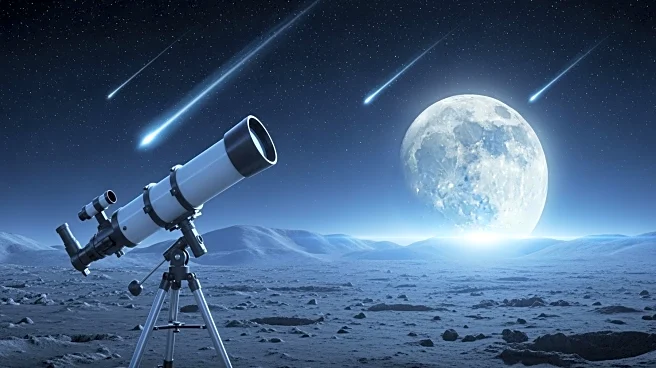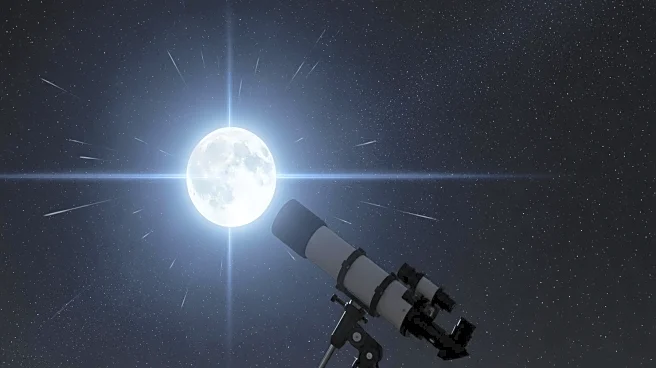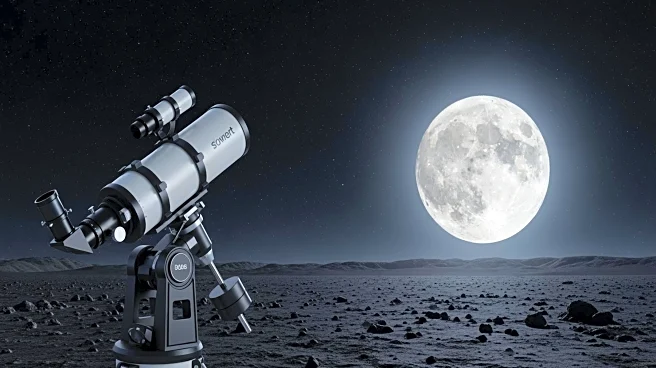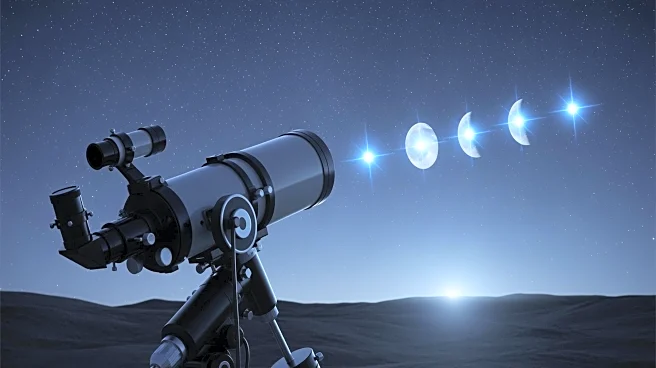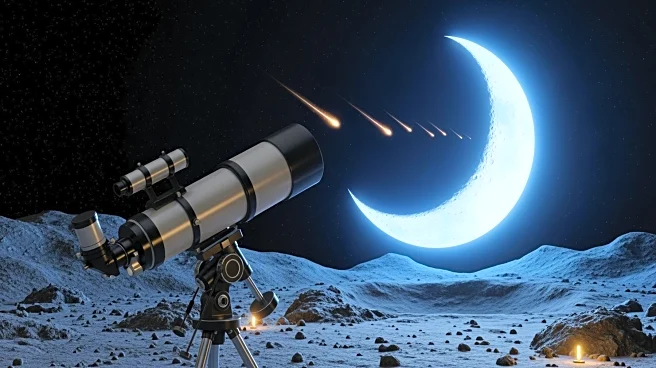What's Happening?
Two mysterious flashes were recently observed on the Moon's surface, leading to speculation among scientists about their origin. Astronomer Daichi Fujii, curator of the Hiratsuka City Museum in Japan,
captured these bright flashes on October 30 and November 1. The flashes are believed to be caused by space rocks impacting the Moon, likely associated with the Taurid meteor shower. This annual meteor shower occurs when Earth passes through debris left by Comet Encke, resulting in visible shooting stars. Fujii's observations were made using multiple telescopes from two locations in Japan, allowing him to detect movement and explosions on the Moon's surface. Over the past 15 years, Fujii has identified nearly 60 lunar impacts using his high-tech setup.
Why It's Important?
The detection of these lunar flashes highlights the ongoing interaction between celestial bodies and space debris. While the Moon lacks an atmosphere to slow down meteors, resulting in high-speed impacts, Earth is protected by its atmosphere, which vaporizes most meteors before they reach the ground. However, new research suggests that larger fragments from the Taurid meteor shower could pose a risk to Earth in the coming decade. These fragments may cause dangerous air bursts or even strike populated areas, potentially leading to significant damage. Understanding these interactions is crucial for assessing future risks and developing strategies to mitigate potential impacts.
What's Next?
Research indicates that around 2032 and 2036, Jupiter's gravity may cluster larger chunks of space rock into Earth's path, increasing the risk of impacts. Scientists will continue to monitor these developments and study the Taurid meteor shower to better predict and prepare for potential threats. This ongoing research is vital for enhancing our understanding of space debris and its potential impact on Earth, informing future policies and protective measures.
Beyond the Headlines
The study of lunar impacts and meteor showers offers insights into the dynamics of our solar system and the potential hazards posed by space debris. These observations contribute to the broader field of planetary science, helping to refine models of celestial interactions and improve predictions of future events. Additionally, public interest in such phenomena can foster greater appreciation for scientific research and its role in safeguarding our planet.
